





Motorcycle Lanes
Provision of separate lanes where there are large numbers of motorcycles can reduce the potential for conflicts with larger vehicles. Motorcycle lanes can be ‘inclusive’ or ‘exclusive’.
Inclusive motorcycle lanes
Inclusive motorcycle lanes are installed on the existing road and are usually located on the outside of the main carriageway for each direction of traffic flow. Motorcycle lanes may be separated from the rest of the road by painted lines or physical barriers. At intersections inclusive motorcycle lanes rejoin the main carriageway and crashes can occur.
Exclusive motorcycle lanes
Exclusive motorcycle lanes require a carriageway completely separate from that used by other vehicles. Exclusive motorcycle lanes minimise crashes between motorcycles and other road users and at intersections.
- Separates motorcyclists from interaction and potential conflict with larger, heavier vehicles.
- Reduced vehicle to motorcycle crashes.
- Can improve traffic flow if well designed.
- Unless they are well designed, motorcycle lanes can increase motorcycle to motorcycle crashes.
- Motorcycle lanes should be at least 1.8 meters wide (for each direction).
- Motorcycle lanes should be at least 3.6 meters wide if overtaking is permitted.
- Horizontal and vertical alignment must be suitable for speeds at which motorcycles will be traveling on the lane.
- Junctions and crossings along motorcycle facilities need to be treated with appropriate layout, adequate visibility and markings design so that different users interact safely.
- Off-ramps must be designed so that motorcyclists exiting the lane are not at risk of being hit from behind by other motorcyclists.
- Crash barrier support posts facing the lane are a hazard and must be protected.
- Centre line marking should be provided in lanes that are wider than 3.5 metres.
- The surface of motorcycle lanes must be properly maintained. Because motorcycles have only two points of contact with the road, slippery or rough road surfaces are a crash risk.
- Depending on local conditions, rest areas, laybys and shelters for rain, strong sunlight or high winds may be needed.
The Star Rating Demonstrator is a freely available tool with the iRAP online software, ViDA. With the Star Rating Demonstrator, it is possible to explore the impact that this Safer Roads Treatment has on risk.
Treatment Summary
Costs | Medium |
Treatment life | 10 years - 20 years |
Potential casualty reduction | 25-40% |
Case Studies
Related Images
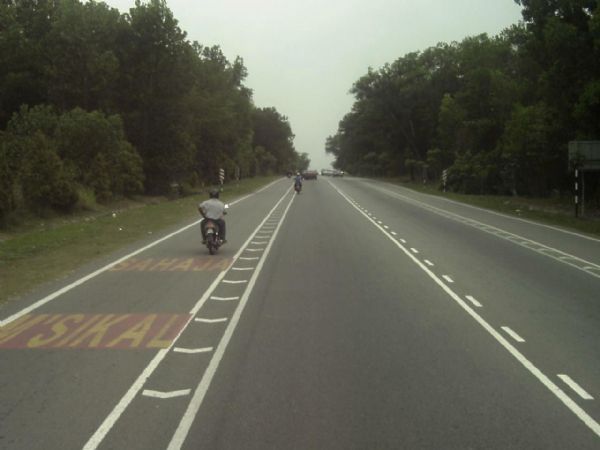 A non-exclusive motorcycle lane in Malaysia. Image credit: Rob McInerney
A non-exclusive motorcycle lane in Malaysia. Image credit: Rob McInerney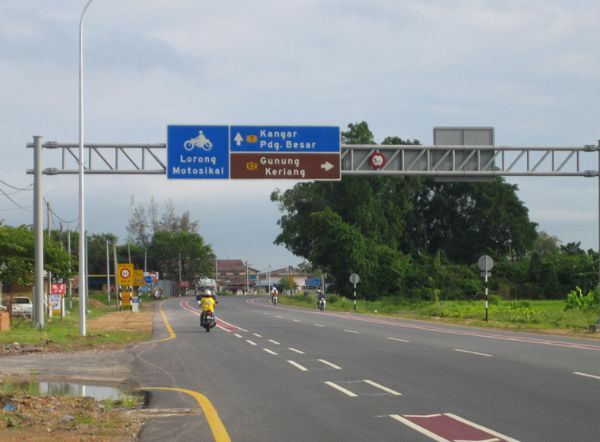 A non-exclusive motorcycle lane in Malaysia. Image credit: MIROS
A non-exclusive motorcycle lane in Malaysia. Image credit: MIROS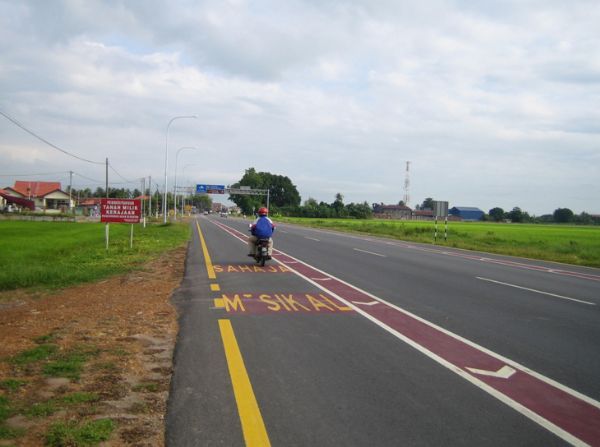 A non-exclusive motorcycle lane in Malaysia. Image credit: Malaysian Institute of Road Safety (MIROS)
A non-exclusive motorcycle lane in Malaysia. Image credit: Malaysian Institute of Road Safety (MIROS)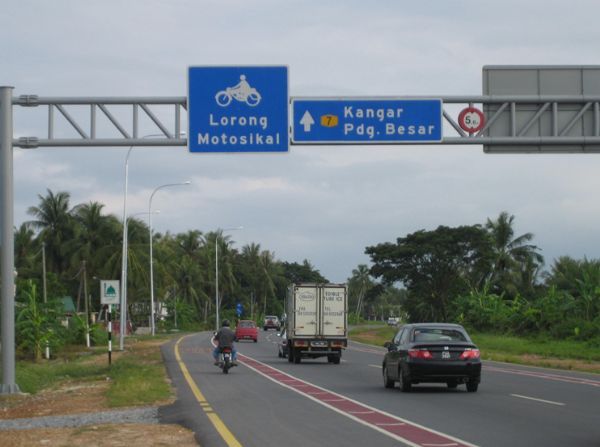 Dedicated on-road motorcycle lane in Malaysia. Image credit: MIROS
Dedicated on-road motorcycle lane in Malaysia. Image credit: MIROS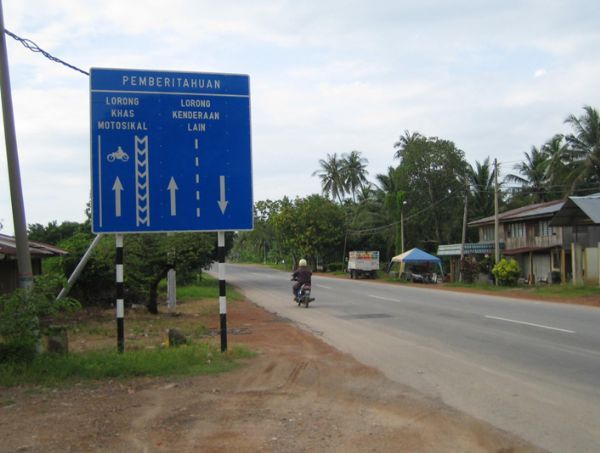 A non-exclusive motorcycle lane sign in Malaysia. Image credit: Malaysian Institute of Road Safety (MIROS)
A non-exclusive motorcycle lane sign in Malaysia. Image credit: Malaysian Institute of Road Safety (MIROS)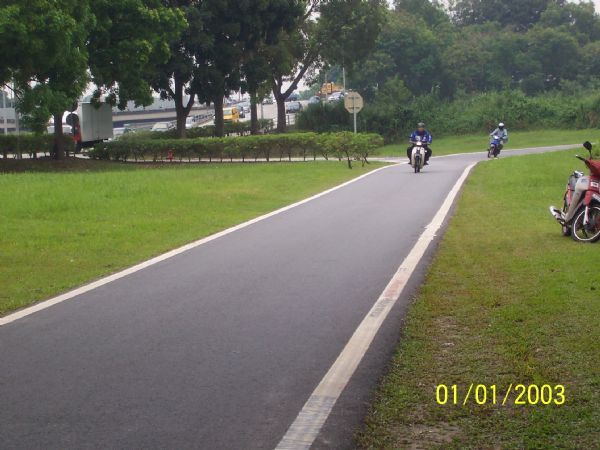 An exclusive motorcycle lane in Malaysia. Image credit: Raymond Teoh Joo Han
An exclusive motorcycle lane in Malaysia. Image credit: Raymond Teoh Joo Han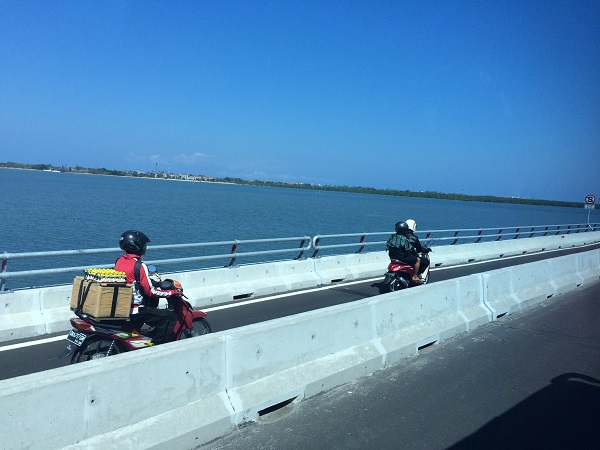 Exclusive motorcycle lane separated by concrete barrier. Image credit: Greg Smith
Exclusive motorcycle lane separated by concrete barrier. Image credit: Greg Smith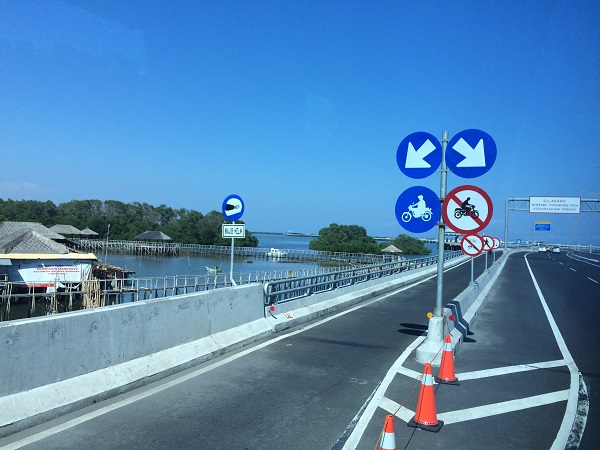 Exclusive motorcycle lane separated by concrete barrier. Image credit: Greg Smith
Exclusive motorcycle lane separated by concrete barrier. Image credit: Greg Smith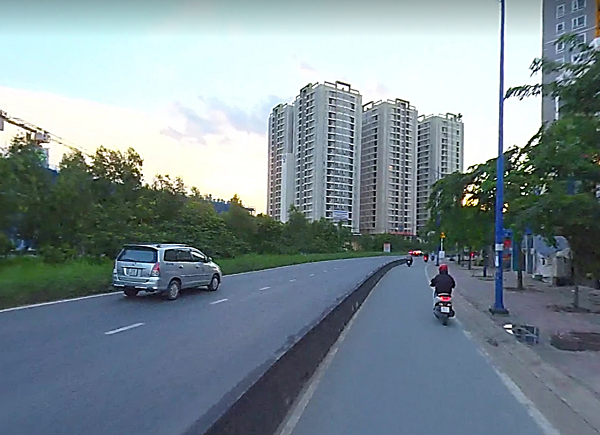 Motorcycle lane in Vietnam. Image credit: Greg Smith
Motorcycle lane in Vietnam. Image credit: Greg Smith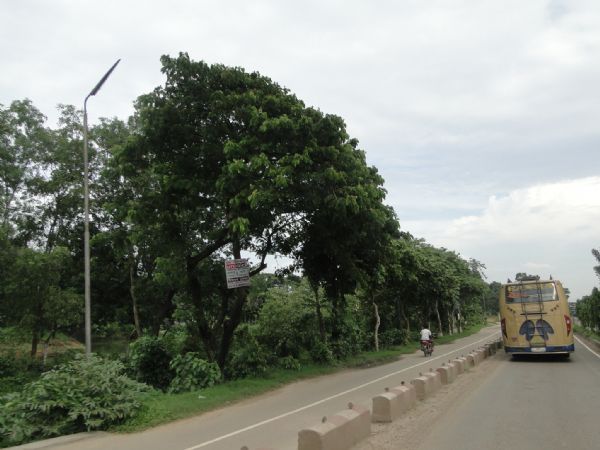 Motorcycle lane on the Mirpur-Paturia Road (N5), Bangladesh. Image credit: Greg Smith
Motorcycle lane on the Mirpur-Paturia Road (N5), Bangladesh. Image credit: Greg Smith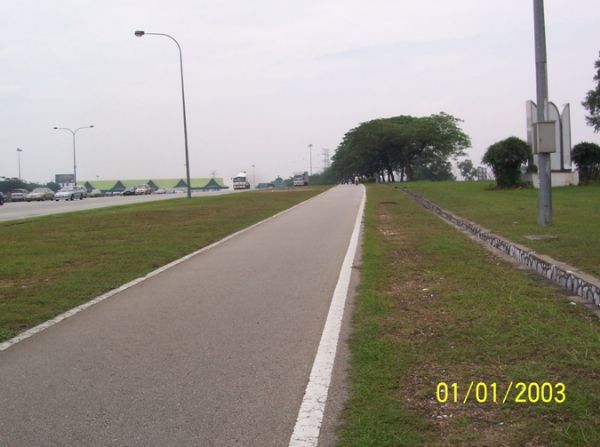 The world's first motorcycle lane, in Malaysia. Image credit: MIROS
The world's first motorcycle lane, in Malaysia. Image credit: MIROS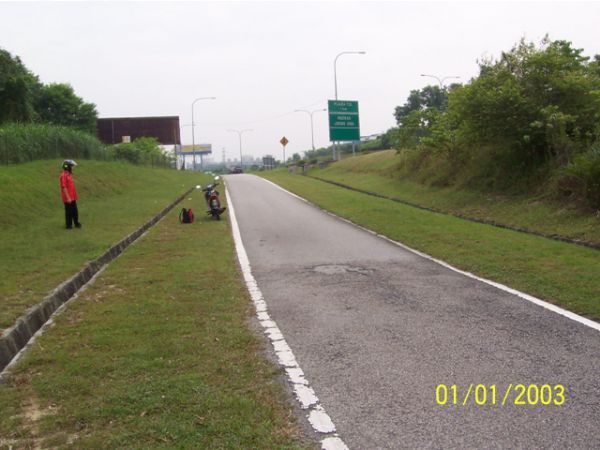 The world's first motorcycle lane, in Malaysia. Image credit: MIROS
The world's first motorcycle lane, in Malaysia. Image credit: MIROS










